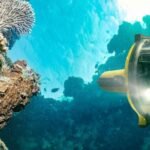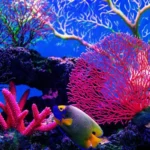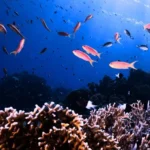Marine archaeology is a captivating and multidisciplinary field that delves into the submerged histories of human civilization, uncovering maritime mysteries and revealing the stories hidden beneath the ocean waves. This article explores the expansive realm of marine archaeology, unveiling its significance, tracing the evolution of key discoveries, examining diverse underwater sites, and envisioning the transformative possibilities it holds for understanding our maritime past.
The Significance of Marine Archaeology
Marine archaeology holds immense significance as it provides a unique window into human history, offering insights into ancient seafaring cultures, maritime trade routes, and the technological advancements of bygone eras. The submerged landscapes beneath the oceans preserve a wealth of archaeological treasures, contributing to our understanding of the interconnectedness of civilizations and the evolution of maritime technology.
Unveiling Ancient Seafaring Cultures
One of the key contributions of marine archaeology is the unveiling of ancient seafaring cultures that once thrived along coastlines and navigated open waters. Shipwrecks, sunken ports, and underwater settlements offer a glimpse into societies’ daily lives, trade practices, and seafaring technologies that have long disappeared from the historical record.
Tracing Maritime Trade Routes
Marine archaeology is vital in tracing maritime trade routes that connect diverse world regions. Underwater discoveries, such as shipwrecks laden with cargo from distant lands, provide tangible evidence of the extensive networks of exchange that characterized ancient trade, fostering cultural diffusion and economic interdependence.
Preserving Cultural Heritage
Submerged archaeological sites serve as underwater time capsules, preserving cultural heritage that would otherwise be lost to the ravages of time and terrestrial decay. Shipwrecks, submerged cities, and sunken artifacts offer valuable insights into past societies’ material culture, artistry, and craftsmanship.
Evolution of Key Discoveries in Marine Archaeology
The evolution of marine archaeology is marked by a series of remarkable discoveries that have reshaped our understanding of the maritime past. These key findings span a range of periods and cultural contexts, showcasing the diversity of human interactions with the seas.
The Antikythera Mechanism: Ancient Astronomical Technology
One of the most celebrated discoveries in marine archaeology is the Antikythera Mechanism, a complex ancient device found in a shipwreck off the coast of the Greek island of Antikythera. Dating back to the 2nd century BCE, this mechanical artifact is considered an early analog computer designed to calculate astronomical positions and predict celestial events.
The Uluburun Shipwreck: Bronze Age Maritime Trade
The Uluburun shipwreck, discovered off the coast of Turkey, offers a unique glimpse into Bronze Age maritime trade. Dating back to around 1300 BCE, the ship carried a diverse cargo, including copper ingots, tin, glass beads, and luxury items from various regions, highlighting the interconnected trade networks of the time.
The HMS Erebus and HMS Terror: Franklin Expedition
The discovery of the wrecked ships HMS Erebus and HMS Terror in the Canadian Arctic has shed light on the ill-fated Franklin Expedition in the mid-19th century. The preserved remains of the ships provide valuable information about the challenges faced by explorers in the harsh Arctic environment and the technological innovations of the era.
The Yonaguni Monument: Submerged Megalithic Structures
Off the coast of Japan, the Yonaguni Monument presents a controversial and intriguing discovery—an arrangement of submerged megalithic structures that some argue may be a natural formation and others believe to be the remnants of an ancient civilization. The site prompts questions about the possibility of sunken ancient cities and prehistoric construction.
Diverse Underwater Sites in Marine Archaeology
Marine archaeology encompasses a wide range of underwater sites, each offering unique insights into different aspects of human history, technology, and cultural practices.
Shipwrecks: Time Capsules of the Sea
Shipwrecks are among the most common and significant underwater archaeological sites. Preserved by the anaerobic conditions of the seabed, shipwrecks offer a wealth of information about ancient seafaring technology, trade routes, and the daily lives of maritime communities.
Submerged Cities and Ports
Submerged cities and ports, such as the sunken city of Heracleion off the coast of Egypt, provide a fascinating glimpse into urban life in ancient times. These sites often contain well-preserved structures, artifacts, and evidence of daily activities, offering a holistic view of past societies.
Underwater Caves and Caverns
Underwater caves and caverns, like the Cosquer Cave in France, have revealed prehistoric art and evidence of early human habitation. These submerged environments serve as unique archaeological contexts, challenging researchers to explore the interaction between ancient humans and coastal landscapes.
Ancient Harbors and Harbor Installations
The discovery of ancient harbors and harbor installations, such as those in the Mediterranean and the Red Sea, provides insights into the maritime infrastructure of past civilizations. These sites reveal the engineering prowess required to create and maintain functional harbors and facilitate maritime trade.
Transformative Possibilities and Future Outlook
The trajectory of marine archaeology points towards a future filled with continued exploration, technological advancements, and interdisciplinary collaboration to unlock the mysteries of the deep.
Advanced Technologies in Underwater Exploration
Advancements in underwater exploration technologies, including remotely operated vehicles (ROVs), autonomous underwater vehicles (AUVs), and high-resolution sonar systems, are transforming marine archaeology. These tools enable researchers to survey larger areas, capture detailed imagery, and collect samples from the ocean depths.
Preservation and Conservation Strategies
Preserving and conserving underwater archaeological sites is paramount for future research. Strategies such as in-situ preservation, protective coatings, and controlled excavations aim to safeguard submerged cultural heritage while allowing researchers to extract valuable information without compromising the integrity of artifacts.
Interdisciplinary Collaboration and Global Partnerships
The future of marine archaeology involves enhanced interdisciplinary collaboration and global partnerships. By bringing together experts from archaeology, marine science, technology, and conservation, researchers can tackle complex challenges and gain a more comprehensive understanding of maritime histories.
Public Engagement and Outreach
Engaging the public in the excitement of marine archaeology is crucial for fostering appreciation and support for underwater cultural heritage. Public outreach programs, educational initiatives, and digital platforms enable researchers to share discoveries and involve the broader community in exploring our maritime past.
Conclusion
Marine archaeology stands at the forefront of uncovering the mysteries beneath the ocean’s surface, offering a captivating journey into our maritime heritage. As we continue to explore the depths with advanced technologies and a multidisciplinary approach, the significance of marine archaeology is both profound and endlessly promising. With each discovery, we unveil new chapters of human history, connecting the threads of civilizations that once sailed the seas and expanding our understanding of the intricate relationship between humanity and the oceans.










